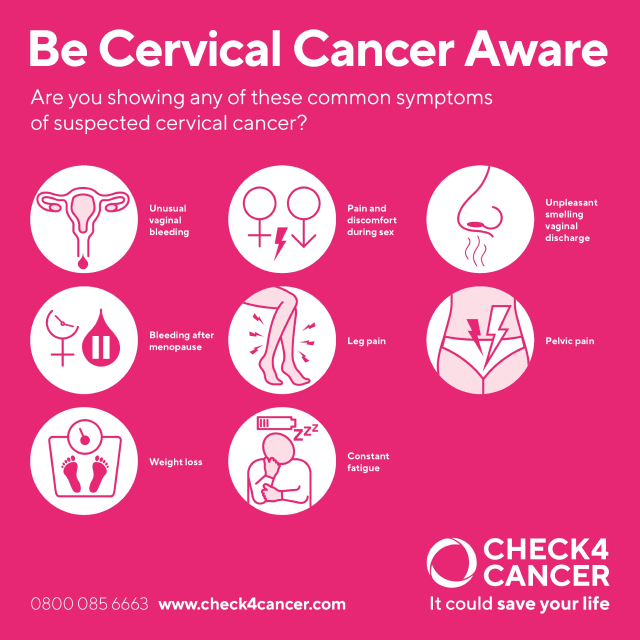What is cervical cancer?
Cervical cancer is a cancer that’s found anywhere in the cervix. The cervix is the opening between the vagina and the womb (uterus).
Cervical cancer happens when abnormal cells in the lining of the cervix grow in an uncontrolled way.
The most common type of cervical cancer is squamous cell cervical cancer that starts in the skin-like cells of the ectocervix. The glandular cells of the endocervix can also become cancerous, leading to an adenocarcinoma of the cervix.


Who does cervical cancer affect?
Cervical cancer is most common in women in their early 30’s. Some transgender men who haven’t had an operation to remove their womb and cervix can also be at risk.
Nearly all cervical cancers are caused by an infection from certain types of human papillomavirus (HPV).
It can often be prevented by attending cervical screening, which can find and treat changes to cells before they turn into cancer.
Signs and symptoms of cervical cancer
Signs and symptoms:
- Vaginal bleeding that’s unusual for you – including bleeding during or after sex, between your periods or after the menopause, or having heavier periods than usual.
- Changes to your vaginal discharge.
- Pain during sex.
- Pain in your lower back, between your hip bones (pelvis), or in your lower tummy.


If you have another condition like fibroids or endometriosis, you may get symptoms like these regularly.
For more information from the NHS on the Symptoms of cervical cancer click the link below.
Further Information
For more information on cervical cancer from the NHS click the link below.






